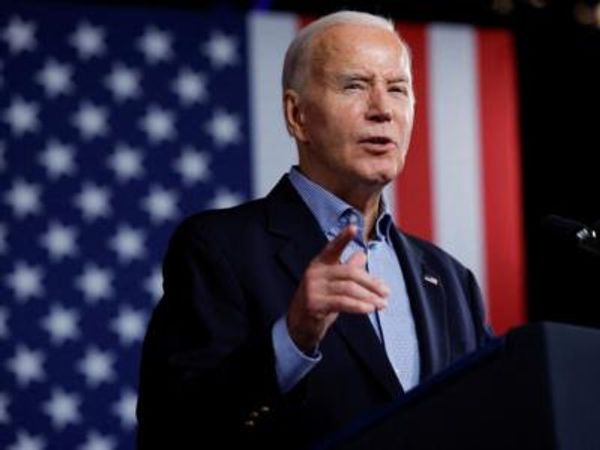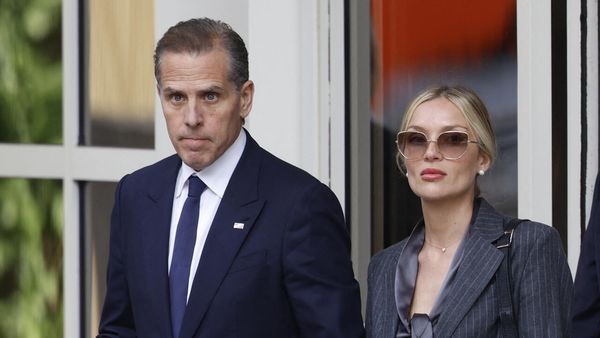The massive Snowy hydro-electricity "2.0" project is rolling on, but without a chief executive, after the collapse of one of the key builders and with a growing question about what it will deliver.
This has been a season of drama for the controversial project, which is building 27 kilometres of tunnels and seeking to revolutionise Australia's electricity grid.
When Snowy Hydro boss Paul Broad's snap resignation was made public in August, the reason given was delays with the project.
But within days, he said it was a clash with Energy Minister Chris Bowen.
"Issues have arisen obviously between what I think of the world and what Chris Bowen, minister for energy, thinks of the world and, rather than create a drama, I resigned," Mr Broad told the ABC at the time.
"I didn't want to put the company in a position where we were seen to be fighting at every level with whatever the government may or may not want to do."
A gas-fired power plant being built at Kurri Kurri in the New South Wales Hunter Valley appears to be at the heart of the tension. It's due to start operating next year and during the election campaign, Labor announced the plant could be converted to use green hydrogen.
"While hydrogen is a wonderful opportunity, it is many, many years away from being commercial," Mr Broad said.
"To think you can have hydrogen running into Kurri Kurri when there is no hydrogen being produced in Newcastle just doesn't make any sense."
Construction firm Clough falls into administration
Before that, Snowy Hydro 2.0 has to be built. And that's not easy either.
Perth-based construction firm Clough entered administration in December after more than a century in the business.
Most of its assets have been sold off for just $17.6 million.
In November, Clough announced an agreement to be bought by Italian construction firm Webuild – who work with the company on the Snowy project.
At the time, Clough chief executive Peter Bennett was delighted by the deal.
"With their substantial balance sheet, Webuild will provide a strong foundation on which Clough's continued growth is well supported," Bennett said.
But, in the first week of December, the Milan-based company announced the deal had fallen through, with both sides agreeing, "there is no reasonable prospect of that acquisition proceeding through to a successful completion".
When the deal fell over, Clough was placed in voluntary administration.
Just a week later, Webuild reached agreement with the Clough administrators to buy Clough's Australian organisation including offices, brand, credentials, business references, senior management and office personnel, as well as its share of the Snowy 2.0 and Inland Rail contracts, with the related workforce.
Webuild has a backlog of work in Australia worth 8.9 billion Euro ($14 billion) and has completed projects including the airport rail line in Perth.
Mega project
The Snowy Hydro 2.0 project is a mega project.
The first tunnel, completed in October, was a 10-metre-wide, 2.8-kilometre stretch to create access to a cavern 800 metres underground where a new power station would be housed.
And it only gets harder from there.
The original scheme produced electricity by buildings dams and releasing the water stored in them to power turbines.
Construction began in 2019 on the so-called "Snowy 2.0" project, which involves a system of "pumped hydro".
Two existing dams will be linked by a 27-kilometre underground tunnel and a new underground power station that will allow water to be pumped and re-used – because it will flow through the turbines twice.
One of the problems in the nation's electricity grid is that an explosion of rooftop solar panels means on sunny days, Australia produces more power than people can use.
But at other times, there is not enough, which is why there are huge investments in batteries and projects like Snowy 2.0.
It will link the Tantangara Reservoir (the top storage) and Talbingo Reservoir (bottom storage).
When there's excess renewable energy in the system, water will be pumped from the bottom storage to the top one.
Then, at times of peak demand — for example, in the evenings — the water in the top storage will be released and will flow through the turbines again, generating power.
It's due to be finished by 2026. But even without delays, there are problems.
The gap
One of the biggest dangers for Snowy Hydro 2.0 is that it will be too late to prevent a catastrophic shortfall in energy.
Ageing coal plants are shutting, but many of the closure dates rely on the machinery holding out — and the economics holding up.
Dr Dylan McConnell from the School of Photovoltaic and Renewable Energy Engineering (SPREE) at University of New South Wales says there is some good news.
"Pumped hydro projects like Snowy 2.0 are a form of energy storage that provides a useful source of dispatchable generation, useful for balancing the grid," he said.
The reason they provide balance is they can pump and fill their reservoirs when there's abundant energy supply and then provide generation later when supplies are low, such as when the sun goes down or if it's not windy.
But the bad news, he says, is that delays to the project could have a cascading impact on the amount of power in the system.
"The market operator doesn't see a delay to Snowy 2.0 having a material impact on the reliability outlook for New South Wales," Dr McConnell says.
"However, that assessment is also contingent on some significant transmission projects being delivered in a timely manner."
Dr McConnell says around four gigawatts of coal-fired power is going to withdraw in the next three years as plants close.
"With [that] and potential challenges with transmission projects, it's hard to imagine a delay of the 2GW Snowy 2.0 project not creating reliability challenges for New South Wales," he says.
There are large projects beyond the pumped hydro at Snowy underway, so keeping the lights on is not all on the shoulders of one development.
Improved reliability will also come from transmission projects, better moving around power from generators to homes and businesses.
But the clock is ticking.
"A key question is how much of the anticipated projects — particularly transmission projects — might be delivered in a timely way," he says.
The Snowy Hydro 2.0 project is set to have a huge impact on the price and reliability of our power.
Beneath the ground, workers are busy digging and building. On the surface, the problems keep mounting.







